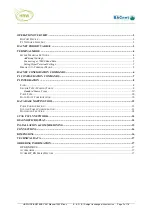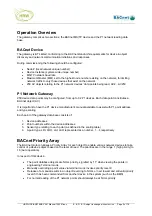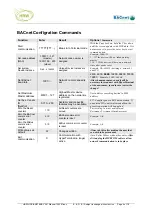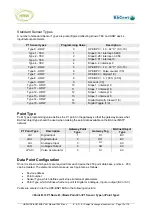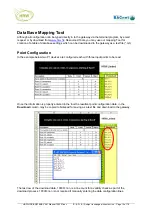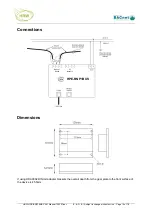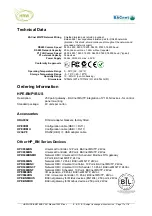
HRW HPE-BNP1BUS V401 Manual 120201.doc E. & O. E. / Subject to change without notice
Page 3 of 18
Operation Overview
The gateway comprises two sections; the BACnet MS/TP device and the P1 network reading data
base.
BACnet Device
The gateway is BTL listed, conforming to the BACnet standard’s requirements for device & object
discovery and network communication initiations and responses.
During commissioning the following should be configured:
Node # (local network unique number)
Device Instance (system-wide unique number)
MS/TP network baud rate
Maximum Master (MM), set to the highest node number existing on the network, for limiting
network traffic to only those devices that exist on the network
250 AV objects relating to the P1 network devices’ data points being read, AV4…AV253
P1 Network Gateway
250 device data points may be configured, from up to 32 P1 devices. Each data point constitutes a
BACnet object (AV).
It is important to have the P1 device manufacturer’s manual available to assist with P1 point address
and type scaling.
Each point of the gateway data base consists of:
1. Device
addresses
2. Point numbers within the device addresses
3. Sensor type relating to each point (as defined in the scaling table)
4. A point type; LDI, LDO, LAI, LAO represented as a number, 1…4 respectively
BACnet Priority Array
The BACnet protocol utilises a Priority Array for each object to enable various network devices to take
control of a device’s object based on the level of need. The priorities are in the range 1 (high priority) to
16 (Auto operation).
In respect of this device:
The point database objects are NULL priority, signified by ‘17’ when viewing the points in
engineering Terminal mode
Manually overriding a point value via terminal mode invokes priority level 9
Release of a manual results in an object reverting to NULL or next lowest and still valid priority
level if it has been commanded from another device in the system (such as the BMS)
For normal reading of the P1 network points should always be at NULL priority


